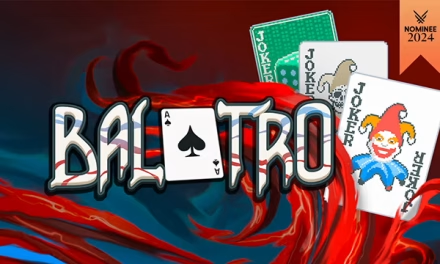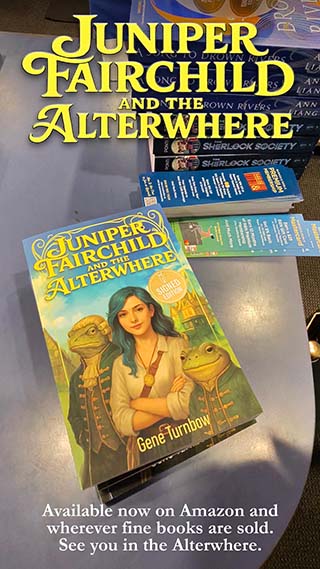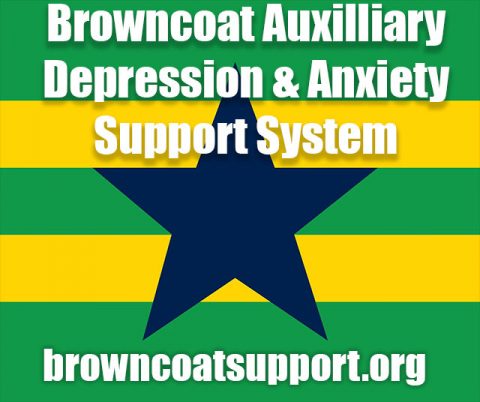Key Takeaways
- Rolling stats for a kingdom can inspire unique narrative elements and plot hooks that enhance storytelling.
- Pure randomization may lead to disconnection from the story's central themes, risking incoherence in worldbuilding.
- The hybrid approach of combining planned elements with random rolls allows for creativity while maintaining thematic control.
- Planned kingdoms offer thematic cohesion, while dice-generated kingdoms introduce chaos and contradiction that can create a more organic narrative.
- Understanding the impact of stats at different scales (kingdom vs. city) can significantly affect narrative urgency and storytelling dynamics.
Can Dice Rools Make a Kingdom?
Treating cities like characters can aid in narrative design.
When you sit down to craft a major kingdom for your fantasy setting, you’re usually thinking in terms of history, culture, geography, politics, trade routes, magical traditions, and the intricate web of alliances and rivalries that make the place feel alive. The hard, chewy stuff of worldbuilding.
Then along comes this DMDave post, telling you to roll up a kingdom’s stats the same way you’d roll a first-level fighter in 1981: six attributes, 3d6, straight down the line. Strength becomes Military Might, Dexterity becomes Infrastructure, and so on. A kingdom’s destiny—its ability to win wars, feed its people, and hold its own diplomatically—boiled down to six random numbers.
Is this genius? Or is it an abdication of narrative responsibility? The answer, like most things in tabletop gaming, is yes. And no. And it depends.
Making a Case for Genius
Rolling stats for your kingdom can be the narrative equivalent of jazz improvisation. You’re forcing yourself out of the safe comfort of planning and into the raw space of reacting.
Suddenly, your mighty coastal empire rolls an abysmal 5 in Dexterity (Infrastructure). Now you have to explain why. Is it constant earthquakes? Corruption in the royal builders’ guild? Or perhaps the realm expanded too quickly to maintain its roads and ports? That one bad roll just created plot hooks, economic consequences, and flavor you might never have invented on your own.
Random stats also promote asymmetry. Too many fictional kingdoms are suspiciously well-balanced—militarily powerful and magically advanced and economically stable and diplomatically beloved. A few bad rolls force you to build nations with glaring strengths and weaknesses, which makes for better conflict. After all, if your northern neighbors are unbeatable in battle but utterly dependent on imported grain, the story practically writes itself.
The Case for Abdication
Now, let’s be real: pure randomization can also be a cop-out. If all your setting’s core features are generated by dice, you risk building a world that feels disconnected from your themes or central narrative arc.
In good storytelling, the world isn’t just a backdrop; it’s a reflection of the story’s values, conflicts, and central questions. If your protagonist’s journey is about uniting fractured city-states against a magical empire, that empire’s stats shouldn’t be random—they should be engineered to challenge the hero in exactly the right ways.
If you roll a “6” for Military Might when your plot requires a superpower, you’ve now got to either ignore your roll (breaking the point of the exercise) or warp your story to fit a constraint that doesn’t serve it. That’s not clever; that’s just shackling yourself to a die result that no reader will ever see.
The Hybrid Approach
Random Seeds, Planned Gardens
The Elite Geek verdict? Don’t treat random rolls as destiny. Treat them as a provocation. Roll your 3d6 straight down, but use each number as a creative challenge, not a binding contract.
Ask: What story could I tell if this were true? If the result excites you, keep it. If it breaks your core narrative arc, tweak it—maybe the number represents public perception rather than reality, or a temporary high/low caused by current events in your timeline. This way, you get the best of both worlds: the surprise and constraint that breed creativity, without surrendering your thematic control over the story.
The Final Word
Rolling stats for a kingdom isn’t “lazy worldbuilding” if you treat the dice as inspiration, not absolution. The die roll should be the spark, not the script. Use randomness to discover unexpected history, social tensions, and geopolitical flavor—but remember: the storyteller’s job is to make the world serve the story, not the other way around.
In short—roll them bones, but don’t be ruled by them. You’re the Dungeon Master, you are never at the whim of the dice. Unless you choose to be.



Kingdoms Under Glass
Example: Two Kingdoms, Two Methods
I. Planned Kingdom: The Sapphire Throne
Approach: Built deliberately to serve a central narrative theme: the price of stability is stagnation.
- Military Might (Strength): 15 – Elite standing army, professional officers, disciplined defense forces.
- Infrastructure (Dexterity): 16 – Vast road networks, fortified trade routes, efficient ports.
- Public Health (Constitution): 17 – Advanced medicine, well-fed population, clean water systems.
- Education/Magic (Intelligence): 14 – Public schools and magical academies foster innovation.
- Economic Stability (Wisdom): 16 – Long-term surplus, stable currency, trusted banking.
- Diplomacy (Charisma): 15 – Powerful alliances, respected emissaries.
Narrative Outcome:
The Sapphire Throne is a well-oiled machine—so well-oiled that nothing changes. Its story arcs naturally revolve around slow, creeping threats: complacency, underestimation of outsiders, and the emergence of disruptive forces (magic, technology, political movements) that challenge centuries of stability. Conflicts are strategic, not chaotic—grandmasters moving pieces on a board.
II. Dice-Generated Kingdom: The Ashen Marches
Approach: Six rolls, 3d6 straight down the line. Results: 12, 5, 14, 7, 9, 6.
- Military Might (Strength): 12 – Decent but strained; militia supported by mercenaries.
- Infrastructure (Dexterity): 5 – Roads are mud in spring, bridges collapse in winter, ports are choked with silt.
- Public Health (Constitution): 14 – Surprisingly strong; hardy populace, resistant to disease thanks to herbal traditions.
- Education/Magic (Intelligence): 7 – Literacy low, magic rare; knowledge concentrated in a handful of monasteries.
- Economic Stability (Wisdom): 9 – Seasonal booms and busts; unpredictable harvests.
- Diplomacy (Charisma): 6 – Few allies, bad reputation for breaking treaties.
Narrative Outcome:
The Ashen Marches immediately suggest a story of struggle and improvisation. The army can hold the border, but the roads mean reinforcements arrive late. They can’t field an educated bureaucracy, so rulership is personal and factional.
The strong public health hints at a culture of resilience: they’ve survived worse. The low diplomacy sets up tension: their few friends are desperate ones, their enemies plentiful. Story arcs will be messy, full of scrappy victories and political betrayals.
How the Method Shapes the Story
Planned Kingdoms tend toward thematic cohesion: everything in the setting serves the intended message. They’re easier to integrate into a larger meta-plot but can risk feeling too “engineered” if not given enough flaws.
Dice-Generated Kingdoms start with chaos. The stats force you to invent why such contradictions exist. This often creates a more “lived-in” feeling—messy, surprising, and organically flawed. But it can also derail a tightly plotted campaign unless you adapt the rolls to your core themes.
Elite Geek Verdict:
- A planned kingdom is a scalpel; you cut exactly where you mean to.
- A dice-generated kingdom is a hammer: you hit it and see what shape the world takes after the blow.
- If you’re clever, you can use both: roll the bones for one or two stats, and design the rest to fit your story’s beating heart.
AND NOW, A BLENDED KINGDOM
The Argent Compact
Approach: Build deliberately to serve the theme “Unity is forged through necessity”, but roll one stat—Economic Stability—at random.
- Military Might (Strength): 15 – Well-trained standing army backed by veteran frontier rangers.
- Infrastructure (Dexterity): 14 – Reliable roads, aqueducts, and a strong maritime fleet.
- Public Health (Constitution): 16 – Skilled healers, disease prevention programs, clean water for all.
- Education/Magic (Intelligence): 13 – Functional literacy, magic integrated into farming and industry.
- Economic Stability (Wisdom): 4 (rolled) – Catastrophically unstable; runaway inflation, currency devalued, and debt crises looming.
- Diplomacy (Charisma): 15 – Highly respected abroad; known for brokering peace between rivals.
Narrative Pivot
The original plan was for the Argent Compact to be a stronghold of civilization—militarily secure, socially advanced, a bastion of order in a dangerous world.
But the dice’s brutal roll for Economic Stability injects a dangerous fault line: despite all their strengths, the Compact is broke. Trade wars, a collapse of silver mines, and reckless spending by past rulers have left the treasury in shambles. Soldiers go unpaid. Infrastructure is maintained by goodwill and bartering. Their vaunted public health system survives only because healers accept chickens and grain in lieu of coin.
How This Changes the Story
- Political Intrigue: Foreign powers offer loans with strings attached. A “peace broker” becomes a debtor, shifting their diplomatic leverage.
- Military Tension: A well-trained army without pay risks mutiny or desertion.
- Social Drama: Public trust erodes as taxes rise but services falter. Black markets flourish.
- Heroic Hooks: The player characters might be tasked with recovering lost treasure, securing new trade routes, or dismantling the corrupt merchant cabals bleeding the kingdom dry.
Why This Works
The single random stat didn’t derail the original vision—it deepened it. Instead of an unshakable bastion, the Argent Compact becomes a fortress on the edge of collapse, where unity is not just a virtue but a survival mechanism.
Randomness didn’t replace the story—it injected friction into it, forcing the storyteller to weave resilience and desperation into every interaction.
Elite Geek Verdict
Planned worlds give you control. Randomness gives you surprise. But the blend? That’s where you get worlds that feel real, because real places are part design, part accident, and part the roll of history’s dice.
What Do These Stats Generally Mean?
There are two ranges, kingdom stats and city/town stats.
Shifting from kingdom stats to city stats changes the scale, impact, and sometimes even the meaning of each value. A city is tighter, more immediate, and more vulnerable to single-point failures than a sprawling kingdom.
Here’s the breakdown.
From Kingdom to City: What the Numbers Mean
- Strength ? Security & Policing
- Kingdom: Military might—armies, fleets, fortress walls.
- City: Local guard competence, militia readiness, presence of mercenary companies, gang control. A 17 here means you walk safely at night; a 5 means the city watch is the crime problem
- Dexterity ? Infrastructure & Logistics
- Kingdom: Roads, bridges, trade routes across provinces.
- City: Street layout, sanitation, public transit (if any), port/market efficiency. High rolls mean clean streets and steady commerce; low rolls mean gridlock, flooding alleys, and collapsed sewer tunnels.
- Constitution ? Public Health & Resilience
- Kingdom: Nationwide health, rural and urban alike
- City: Hospital capacity, availability of clean water, food storage, disaster preparedness. A 16 means plague is rare and quickly contained; a 6 means one bad harvest or outbreak brings the city to its knees.
- Intelligence ? Education, Innovation, & Culture
- Kingdom: Literacy, universities, magical colleges spread across the realm.
- City: Quality of local schools, guild knowledge, artistic innovation, magical workshops. A high score means a vibrant intellectual life; a low one means most citizens can’t read their own street signs.
- Wisdom ? Economic Stability & Resource Management
- Kingdom: Macro-economy, national currency, trade policy.
- City: Local economy’s ability to keep shops open, pay workers, and avoid debt spirals. A 15 here means thriving markets and secure coin; an 8 means pawn shops are booming while everyone else is broke.
- Charisma ? Civic Reputation & Diplomacy
- Kingdom: International alliances, royal prestige.
- City: How other cities, guilds, and travelers view it—tourism appeal, trade invitations, influence in city-state councils. A 17 means everyone wants to be seen there; a 4 means it’s a cautionary tale.
Key Difference
In a kingdom, low rolls create slow-burn problems—wars, recessions, famines—that take months or years to play out.
In a city, the same low roll creates immediate crises—riots, disease outbreaks, food shortages—that can explode in a matter of days.
That immediacy means that when rolling city stats, your narrative hooks often appear right away. A city with “Infrastructure 5” isn’t just inefficient—it’s probably in the middle of a flood or traffic snarl the moment your characters arrive.
Kingdom Stat Roller
(Scale: Grand politics, multi-region control, long-term consequences)
Here is a Stat Roller for both Kingdoms and Cities, using the same six core stats but scaled for their different storytelling weight. You can roll 3d6 down the line for pure chaos, point-buy for control, or blend the two.
- Military Might (Strength)
3–6: Fractured forces, poorly trained troops, outdated weapons.
7–10: Small professional core with levies or mercenaries filling the ranks.
11–14: Well-trained, reasonably equipped army and navy.
15–18: Elite forces, advanced tactics, feared abroad. - Infrastructure (Dexterity)
3–6: Collapsing roads, unsafe bridges, bottleneck ports.
7–10: Functional but patchy; some regions isolated.
11–14: Reliable roads, good fortifications, stable trade routes.
15–18: Seamless logistics, fortified borders, rapid deployment. - Public Health (Constitution)
3–6: Famine, disease, inadequate medicine.
7–10: Basic public health in urban centers; rural areas underserved.
11–14: Clean water, stable food supply, minimal disease outbreaks.
15–18: Advanced healthcare, surplus food, disaster-resistant. - Education & Magic (Intelligence)
3–6: Knowledge hoarded by a few; literacy rare.
7–10: Schools in major cities; magic rare but present.
11–14: Public education common, magical colleges established.
15–18: Universal literacy, magical and scientific breakthroughs. - Economic Stability (Wisdom)
3–6: Debt-ridden, unstable currency, trade deficits.
7–10: Cyclical booms and busts.
11–14: Balanced budgets, steady trade.
15–18: Resilient economy, thriving markets, surplus reserves. - Diplomacy (Charisma)
3–6: Reviled, distrusted, or diplomatically isolated.
7–10: A few allies; mostly neutral standing.
11–14: Respected, sought for mediation.
15–18: Beloved powerbroker, central to alliances.
Single Point Failure Story Hooks — Kingdom Scale
- Low Kingdom Strength (Military Might)? The capital’s army is tied up in a border war—leaving your province undefended when raiders cross the frontier.
- Low Kingdom Dexterity (Infrastructure & Logistics)? The only mountain pass to the grain belt collapses in a landslide—famine looms in the heartland within weeks.
- Low Kingdom Constitution (Public Health & Resilience)? A slow-moving plague starts in the port cities—by the time the court hears of it, it’s already in three provinces.
- Low Kingdom Intelligence (Education & Magic)? The royal mage corps botches a critical ritual—failing to control a magical disaster that sweeps across multiple regions.
- Low Kingdom Wisdom (Economic Stability)? A trade embargo from your largest partner triggers a realm-wide recession—gold vanishes from markets, unrest spreads.
- Low Kingdom Charisma (Diplomacy)? An insult at a royal banquet sparks a coalition of neighboring states to close their borders and prepare for war.
These keep the slow-burn, macro-level feel of kingdom politics but still give you an immediate narrative inciting incident you can drop into session one.
City Stat Roller
(Scale: Local politics, street-level events, rapid consequences)
- Security & Policing (Strength)
3–6: Inept guards, corrupt watch, criminal gangs rule.
7–10: Capable but undermanned; trouble spots persist.
11–14: Well-trained city watch, predictable law enforcement.
15–18: Elite guard corps, near-total crime suppression. - Infrastructure & Logistics (Dexterity)
3–6: Congested streets, crumbling sewers, constant outages.
7–10: Functional but creaky; occasional blockages or breakdowns.
11–14: Well-maintained streets, efficient transport, working sanitation.
15–18: Flawless systems; markets stocked year-round, no transit delays. - Public Health & Resilience (Constitution)
3–6: Plagues, tainted wells, poor sanitation.
7–10: Basic medical aid; seasonal sicknesses common.
11–14: Adequate hospitals, regular clean water.
15–18: Exemplary health systems; rapid crisis response. - Education, Innovation & Culture (Intelligence)
3–6: Few schools; stagnant arts and sciences.
7–10: Guild schools and libraries serve the wealthy.
11–14: Accessible education, vibrant art, public lectures.
15–18: Citywide literacy, famous academies, cutting-edge inventions. - Local Economy & Markets (Wisdom)
3–6: Rampant unemployment, food shortages, failed businesses.
7–10: Uneven prosperity; some districts thrive, others starve.
11–14: Steady markets, stable coin, affordable goods.
15–18: Booming trade, bustling bazaars, lucrative exports. - Civic Reputation & Influence (Charisma)
3–6: Infamous for crime, corruption, or hostility to outsiders.
7–10: Neutral; seen as provincial or unremarkable.
11–14: Well-regarded; attracts travelers and trade.
15–18: Renowned hub, cultural beacon, influential in city-state councils.
How to Use These Tables
Pure Chaos Mode: Roll 3d6 for each stat, accept results as-is, and build the story from the contradictions.
Planned Backbone Mode: Choose 3 stats to set deliberately to match your narrative theme; roll the other 3 for surprise.
Player Discovery Mode: Roll in secret and let the characters learn the city/kingdom’s strengths and weaknesses through play, not exposition.

Single Point Failure Story Hooks
- Low City Strength (Security & Policing)? The watch is outnumbered and corrupt—thieves are looting the docks while you’re still unloading your ship.
- Low City Dexterity (Infrastructure & Logistics)? A main bridge collapses just as you need to cross—cutting you off from your target and stranding half the city.
- Low City Constitution (Public Health & Resilience)? The plague cart just rolled by your inn—no one told you the quarantine started this morning.
- Low City Intelligence (Education, Innovation & Culture)? The map you bought is wrong because no one in the market can read it, including the scribe who sold it to you.
- Low City Wisdom (Local Economy & Markets)? Your quest giver can’t pay you—because the market collapsed yesterday and the mint is closed “until further notice.”
- Low City Charisma (Civic Reputation & Influence)? Guards harass the party at the gate because they’re from that town—and rumor says your kind bring trouble.
![]()
Thaddeus Howze is an award-winning essayist, editor, and futurist exploring the crossroads of activism, sustainability, and human resilience. He's a columnist and assistant editor for SCIFI.radio and as the Answer-Man, he keeps his eye on the future of speculative fiction, pop-culture and modern technology. Thaddeus Howze is the author of two speculative works — ‘Hayward's Reach’ and ‘Broken Glass.’













You must be logged in to post a comment.